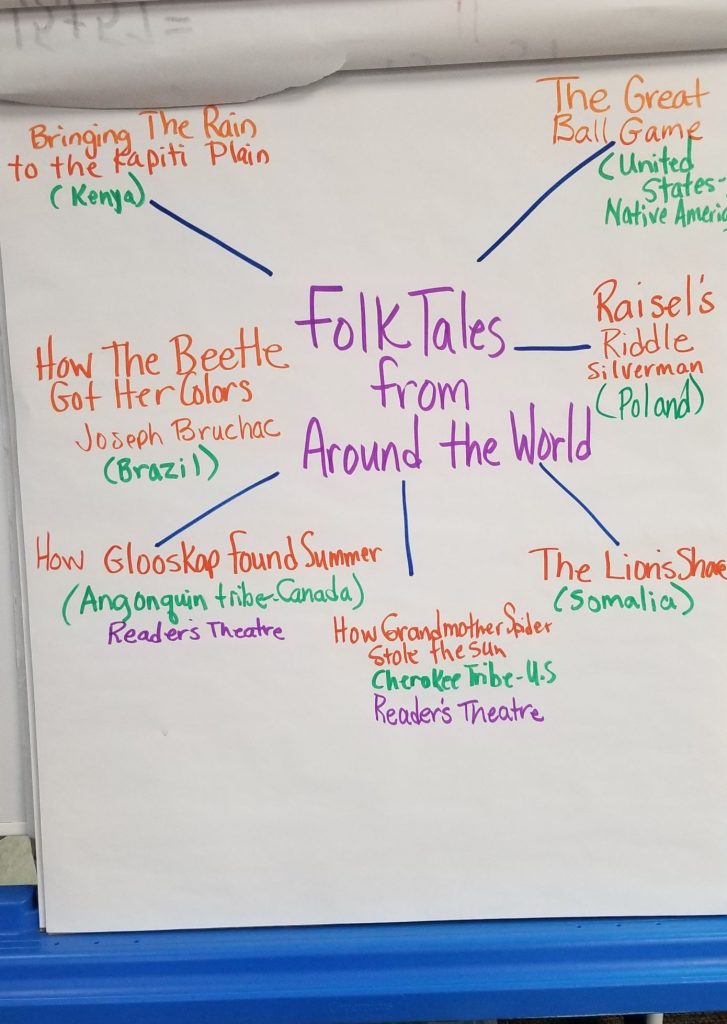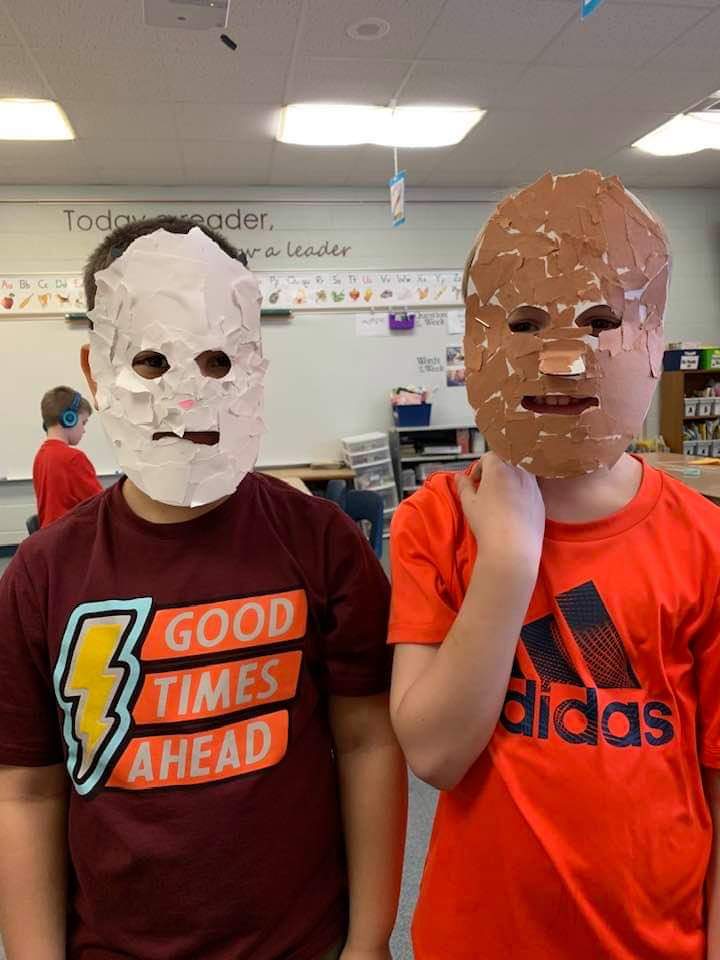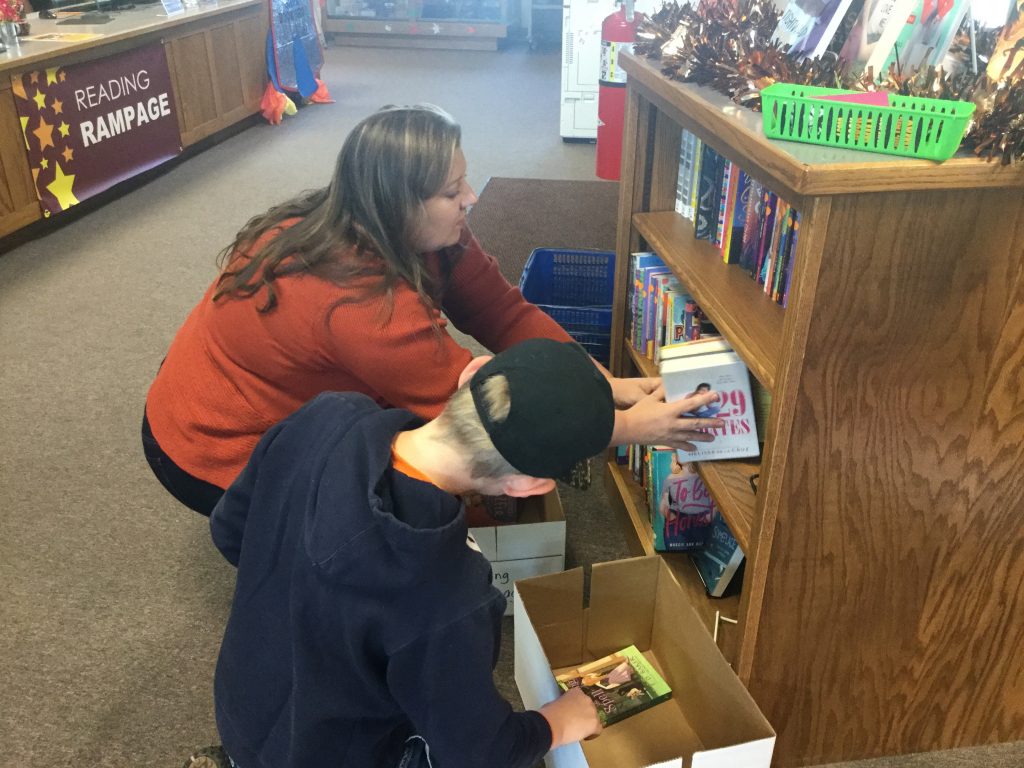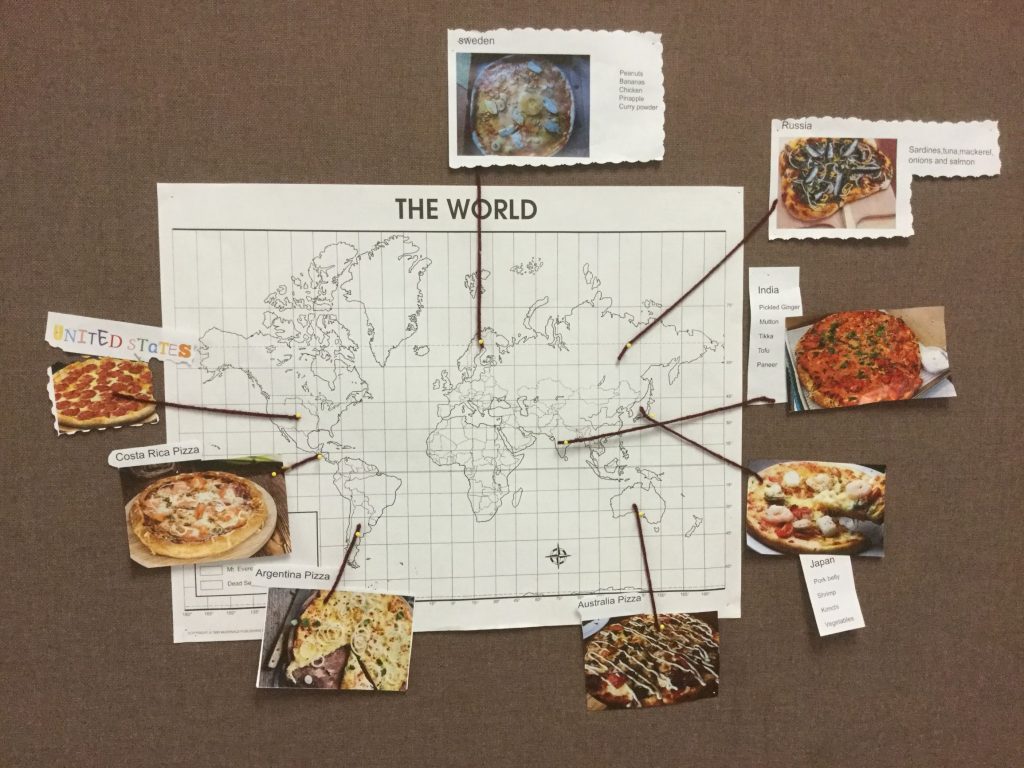Integrating Global Literature into the Curriculum
Donnette Michelson and the Barron Global Literature Group
The Barron Area School District is located in rural Northwestern Wisconsin, quietly nestled between Rice Lake and Eau Claire, with three elementary schools, one middle school and one high school dispersed between three small communities. The total enrollment is just over 1,100 students with 56% of students from economically-disadvantaged households. The district is a colorful and diverse environment with no shortage of unique students. Of these students, 14.3% are ESL students, with the majority being Somali students. Additionally, 75% are white students and the additional populations are .5% American Indian, .6% Asian, 14% Black, and 7% Latinx.
The main goal of our teacher study group was to incorporate a global perspective and multicultural literature into students’ education and lives. We introduced global literature into our grade 2 folktale unit, a middle school grade 7-8 FACE class (Family and Consumer Science Education), a middle school reading day held in collaboration with the Barron Public Library, a high school multicultural art class, and a Spanish class. In our meetings, we discussed classroom activities and curriculum and brainstormed how we could enable ourselves to engage students in a global perspective through interactions with global literature. Although most school districts do not have room and time on their agenda, we believe that this type of education is extremely vital and impacts the young minds of our world’s future. Even though we are located in the northwoods of Wisconsin with few resources, staff, or urban amenities, students in our district speak English, Somali, Spanish, Arabic and Swahili. We yearn for all students to have the opportunity to learn teamwork, digital skills, compassion for others, and an open global perspective as they grow during their time in our schools.
This vignette describes units around global literature with folktales in second grade, Reading Rampage at the public library, middle school cooking around the world, and multicultural art with teens.
Exploring Folktales in Second Grade
The school district has an exceptionally large population of Somali families who are refugees from Somalia and Kenya. We have a burning need for more books with Muslim characters and other people of color in everyday life to engage students with books that mirror themselves and their lives. Our libraries would greatly benefit from more books and classroom curriculum that portray this diversity. Unfortunately, the majority of books in our libraries exclude the stories of marginalized people. One of the tasks of the library media specialist was to evaluate the current selection of folktales and fairy tales in the collection. Each title considered to be a fairy tale or a folktale was researched to determine the country of origin of the story as well as the background of the author and illustrator. After creating a document with this information, each category was sorted by country to evaluate the number of books by country. This provided the librarian with information about the gaps in the collection and the areas of the world absent from the collection for future purchasing decisions.

Figure 1. Grade 2 folktale anchor chart.
After reading a variety of folktales, second-grade students compared these stories in the classroom. Along with the traditional folktales, additional literature was included that focused on immigration, Muslim characters, refugees, and cultural understanding. In the WIN (What I Need) class, students read several Readers Theatre scripts and made masks using the art from The Lion’s Share (McElligott, 2012). The WIN class is a class where student progress is monitored and the teacher provides support for academic or emotional needs for students who need extra help or reteaching.

Figure 2. Second-grade students wearing their masks.
Middle School Reading Rampage
A Reading Rampage was held in conjunction with the Barron Public Library. On an inservice day of professional development for teachers, students were not in school and so had the opportunity to attend a read-a-thon at the public library. The school district librarian and the library aide created a list of books that included global themes of food insecurities, exclusion of people of color, social marginalization, religion, and cultural understanding. These books were purchased so that attendees received two free books. One book was to be used during the read-a-thon and the other book was taken home at the end of the day to build their home libraries. The public library featured displays of global literature and incorporated multicultural crafts into the day’s activities. Students were surveyed after the event and some students wrote book reviews of their favorite books from the day.

Figure 3. Selecting books at the Reading Rampage.
The following is one example of a student book review:
I really liked the book Other Words for Home because it’s about a girl that goes to a different country and has to learn new things and words. I like that for Jude, friends can come easy for her she just has to look hard enuf. The thing that inspired me to read this book is the cover because it has a picture of Jude wearing a headscarf that you can see through, like in the book when she feels like people can see through her and the cover has a picture of where she lived which gives readers a good description of what kind of house she lived in. I liked how much the author expressed how people looked and felt all the time. I think it’s cool that Jude has people that understand what she’s going through and how she’s brave enough to tell them. I like how there’s not much words on a page kind of like a poem but it’s not and how other people think about how fast I read the book but really it’s a pretty short book. I really got into the book and couldn’t put it down. I would definitely recommend this to my friends especially the one that reads the same kinds of books as me.
–McKenzie
Middle School Cooking Around the World
Wisconsin is known as America’s Dairyland because of our large agricultural society and businesses connected to the dairy industry. Being the number one state for cheese production is something we are proud of. Our traditional dairy industry has seen changes of employment, specifically because of new workers that originate from Mexico. By using cheese and dairy in our FACE class (Families and Consumer Education), we were able to teach about the connection between the foods we produce and are proud of, and different foods around the world. The FACE teacher invited eighth-grade students to research the most popular pizza toppings by country. They also researched the history of pasta by using the World Food Markets of Mexico, Italy, Spain, France, and China. The students synthesized their research, made their global recipes and enjoyed tasting their creations. Students also researched different countries and found the top pizza choices in each region.

Figure 4. Pizza around the world map.
High School Multicultural Art
One of the elective art classes is multicultural art. Projects are selected from India, Japan, Africa, Mexico, Russia, and American Indian cultures. For each focus, a book from the specific culture was shared with students as an inspiration and artistry for their projects. By using what is traditionally considered children’s literature, high school students could easily relate to the story using their own personal expression and creativity and focus on the impact of the arts on culture and society.
Final Reflections
As a study group, we were able to dive into global literature and realize how much further we need to go as teachers in making students’ educational experiences more global for our 21st-century learners. There are numerous untapped global resources waiting to be discovered by eager students and teachers. Everyone learned that there is a definite distinction between multicultural literature, global literature, and international literature and as educators we should be sharing these texts with students in classrooms and libraries.
Educators need to expand the selection of global cultures, immigrant authors and illustrators, and translated books for students. There are more books being published and available on the global market with a strong literary merit that portray diverse global cultures with accurate portrayals and sensitivity featuring marginalized groups that are culturally respectful. These books should be the focus of dialogue and human curiosity.
Children’s Literature Resources
Aardema, V. (1992). Bringing the rain to Kapiti Plain. Illus. B. Vidal. New York: Puffin.
Bruchac, J. (1997). The great ball game. Illus. S. Roth. New York: Dial.
Faruqi, R. (2015). Lailah’s lunchbox. Illus. L. Lyon. Gardiner, ME: Tilbury.
Florence Parry Heide, J., (1997). Sami and the time of the troubles. Illus. T. Lewin. New York: Clarion.
Khan, H. (2018). Night of the moon. Illus. J. Paschkis. San Francisco: Chronicle.
Khan, H. (2019). Under my hijab. Illus. A. Jaleel. New York: Lee & Low.
Khan, R. (2010). Big red lollipop. Illus. S. Blackall. New York: Viking.
Kostecki-Shaw, J. (2011). Same, same, but different. New York: Henry Holt.
Méndez, Y. (2019). Where are you from? Illus. J. Kim. New York: HarperCollins.
McElligott, M. (2012). The lion’s share. New York: Bloomsbury.
Park, Y., Pearse, S., & Mays, L. (2007). How grandmother spider got the sun. Illus. M. Grejniec. New York: Mondo.
Silverman, E. (2003). Raisel’s riddle. Illus. S. Gaber. New York: Farrar, Straus and Giroux.
Donnette Mickelson is the District Library Media Specialist for the Barron Area School District in Barron Wisconsin who loves to share literature with all ages. She attended the University of Wisconsin Eau Claire where she earned a MS degree in Library Science and a bachelors in elementary education.
Robin Hanson is a second-grade teacher at Woodland Elementary.
Rebecca Gibbs is the Riverview Middle School Library Aide.
Sue Becker is the Riverview Middle School FACE teacher.
Suzanne Vergin is the art teacher at Barron High School.
Jon Thompson is the Spanish teacher at Barron High School.
Lisa Kuebli is the Barron Public Library Director.
Authors’ Note: The Global Literacy Communities received grants and instructional support from Worlds of Words for their work with teachers and students around global literature. These grants were funded by the Center of Educational Resources in Culture, Language and Literacy at the University of Arizona, a Title VI-funded Language Resource Center of the U.S. Department of Education.
© 2020 by Donnette Mickelson, Robin Hanson, Rebecca Gibbs, Sue Becker, Suzanne Vergin, Jon Thompson, and Lisa Kuebli

WOW Stories, Volume VIII, Issue 2 by Worlds of Words is licensed under a Creative Commons Attribution-NonCommercial-ShareAlike 4.0 International License.
Based on a work by Donnette Mickelson et al. at https://wowlit.org/on-line-publications/stories/volume-viii-issue-2/9/.
WOW stories: connections from the classroom
ISSN 2577-0551
